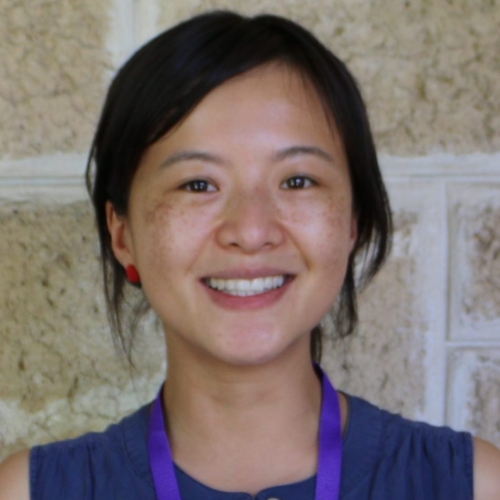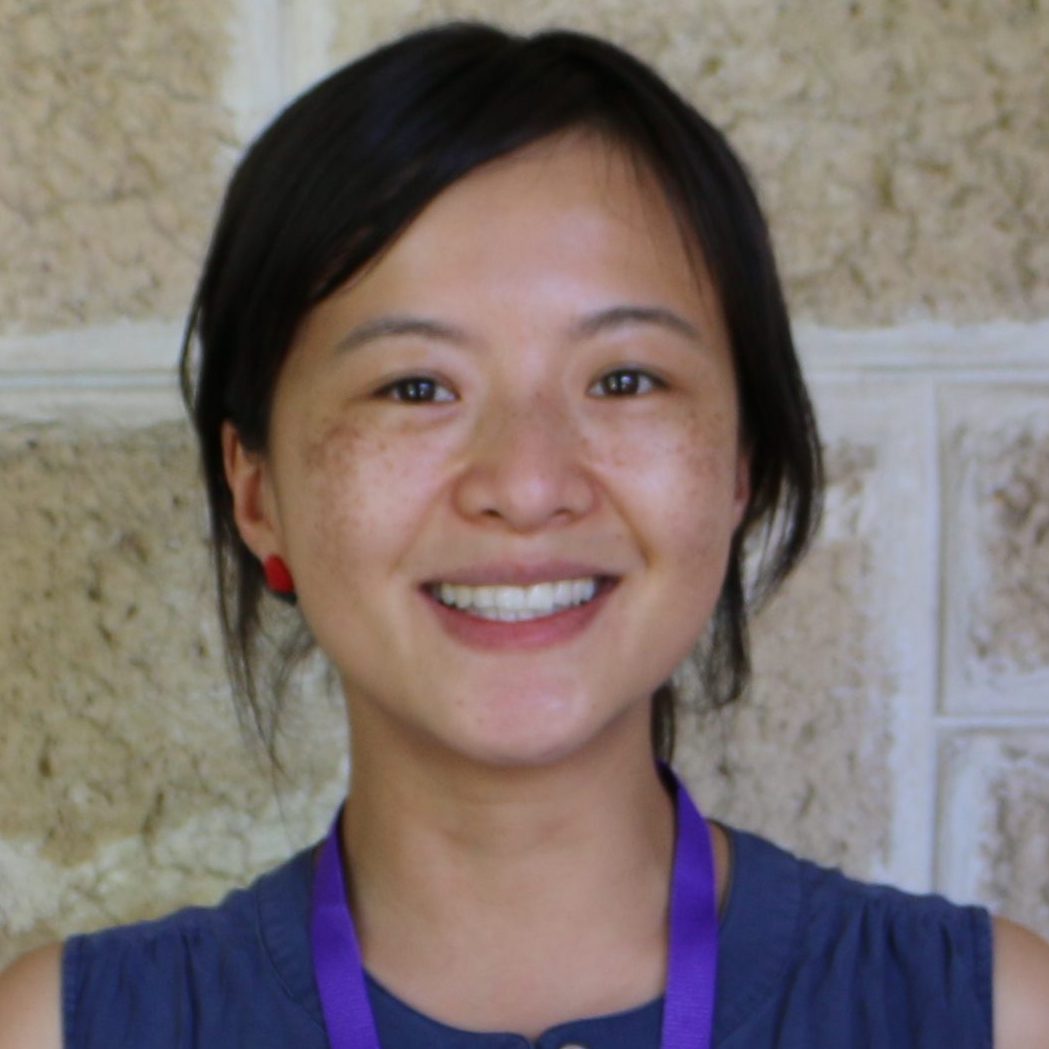
Erika Duan
La Trobe University
Dr Erika Duan is an early career researcher from the Department of Biochemistry and Genetics at the La Trobe Institute for Molecular Science, La Trobe University. She obtained her BBiomedSc and BSc (Honours) at the University of Melbourne, where she majored in biochemistry and pharmacology. During her PhD, she investigated how immune cells in the lungs could coordinate protective responses during pathogen invasion, yet also promote chronic tissue remodelling if aberrantly activated. She currently extends this research by using transcriptomics and semi-quantitative proteomics to identify the signalling pathways responsible for switching on and off these pathogen response networks.
Can you give me a quick overview of the type of mathematics you are studying and its potential impacts for the broader community?
I generate and study large datasets containing changes in thousands of individual signals (genes or proteins) at multiple timepoints before, during and after lung infection. I use bioinformatics workflows to identify clusters of signals which are statistically likely to be increased or decreased between one timepoint and another. Mathematical modelling of signal variance and its relationship with signal amplitude and data sampling are the principles which underpin this part of my statistical analysis.
Bioinformatics and ‘big data’ analysis tools have been evolving rapidly and I see exciting potential in many areas of biomedical research, from the stratification of patients who respond differently to the same medical procedure to a higher resolution understanding of how biological resistance (i.e. in cancer cells to chemotherapy or in pathogens to antibiotics) is required. My own research may enable us to better understand why certain individuals are more vulnerable to lung infections than others.
You attended AMSI BioInfoSummer, what drew you to this event? What was the most valuable part of AMSI BioInfoSummer for you in terms of furthering your career in mathematical sciences?
I was drawn to the comprehensive breadth of topics covered by ASMI BioInfoSummer and the seminars and workshops introducing new technologies like single cell RNA sequencing. Apart from gaining valuable hands-on experience using different data analysis workflows, I have acquired a clearer understanding of the mathematical rationale governing data analysis workflows.
Did this event lead to any new projects, collaborations? What were some outcomes in terms of your work?
Yes, to my delight, I have made many new social media connections and contacts. I have also gained an even greater appreciation of the statistical principles underlying biological data analysis and an improved understanding of single cell RNA sequencing analysis workflows. I find myself seeking out and feeling less afraid to read bioinformatics research papers and will soon be conducting my own single cell RNA sequencing analysis with collaborative support from local bioinformaticians.
You received a CHOOSEMATHS Grant to assist your attendance at AMSI BioInfoSummer. How important was this in terms of your ability to attend and fully participate in the sessions throughout the week? How did you hear about the grant?
The CHOOSEMATHS Grant was crucial in assisting my attendance at AMSI BioInfoSummer, as my trip would otherwise have been self-funded. I do feel that there are otherwise few opportunities for wet-lab biologists to access bioinformatics and/or mathematical science symposiums, despite the increasing prominence of ‘big data’ analysis and high throughput sequencing applications in our research fields.
How important are initiatives such as the CHOOSEMATHS Grants in terms of fostering the participation and achievement of women in mathematics, particularly in terms of access to networking opportunities and further training opportunities?
Initiatives which facilitate more networking and training opportunities, especially for women in mathematics, are crucial as they help individuals to build their visibility and professional confidence. I believe that these two aspects are particularly important for long-term career sustainability, especially in a world where work processes and projects are constantly evolving.
In what ways has the experience impacted your maths studies? Has it influenced the direction of your research?
Attending AMSI BioInfoSummer has personally reinforced how important mathematical and statistical knowledge is for creative problem solving, especially in the era of ‘big data’ analytics. I am inspired to actively revise my undergraduate mathematics and statistics knowledge (using R markdown/blogdown) and to potentially blog about it too.
The CHOOSEMATHS Grants are part of a broader program being delivered by AMSI Schools with support from the BHP Foundation to turn the tide on Australia’s maths deficit and strengthen maths education and participation of women across the discipline. What do you see as the big challenges facing maths in Australia, particularly for women?
Participation in STEM subjects, especially mathematics, needs to be encouraged early and I worry that a future key barrier may be socioeconomic inequality, where parents from professional backgrounds are more likely to encourage their children to develop skills in STEM and vice versa. I wonder if there is also a harmful misperception that only a subset of individuals in a classroom are naturally adept at learning ‘difficult’ subjects like mathematics and physics, which discourages others from trying. This misperception needs to be dispelled early. Certainly, some people are quicker at mental maths and logical problem solving than others, but STEM-related occupations can require more nuance, with resilience, creative thinking, good organisation and clear communication skills also vital for job success.
Did you always want to pursue a career in maths? Were you encouraged to study these subjects at school?
Unfortunately, in high school, despite having the best of teachers, I viewed mathematics as a prerequisite to be fulfilled rather than a subject of interest. I scored the lowest mark in Year 12 Mathematical Studies amongst my accelerated Year 11 cohort (it was an A- but still very scandalous) and chose to study Visual Art Studies instead of Specialist Mathematics the next year. This decision caught up with me during the first year of my undergraduate studies, when it felt like everybody around me was already a calculus guru. Out of desperation and fear, I resolved to study very hard and actually achieved a 95 average in mathematics and statistics. This episode has taught me that tenacity can be more important than natural ability when studying mathematics. I was also lucky to have benefitted from excellent lecturers and tutors during my undergraduate studies.
Where do you see yourself in five or ten years time?
Ideally, I would like to be in a position where I could use data analysis and statistics to derive informed insights about research, education, health governance or public policy. I also hope to be continually learning more coding and statistical theory in my spare time.
Did you learn about new career options available to you that you were not aware of prior to attending AMSI BioInfoSummer?
Yes, in fact, I may consider studying a Masters in Bioinformatics as a lateral career option!
If a peer asked you if they should attend AMSI BioInfoSummer, how would you describe the conference to them?
A friendly and informative conference that provides a hands-on approach to the learning of data analysis principles governing genomics, transcriptomics, epigenomics, proteomics and metabolomics research.
Any other feedback/comments you would like to provide on the CHOOSEMATHS grant or AMSI BioInfoSummer?
Thank you for supporting me to attend AMSI BioInfoSummer. It was such a rewarding experience and has really encouraged me to relearn and keep learning more statistics and mathematics.

